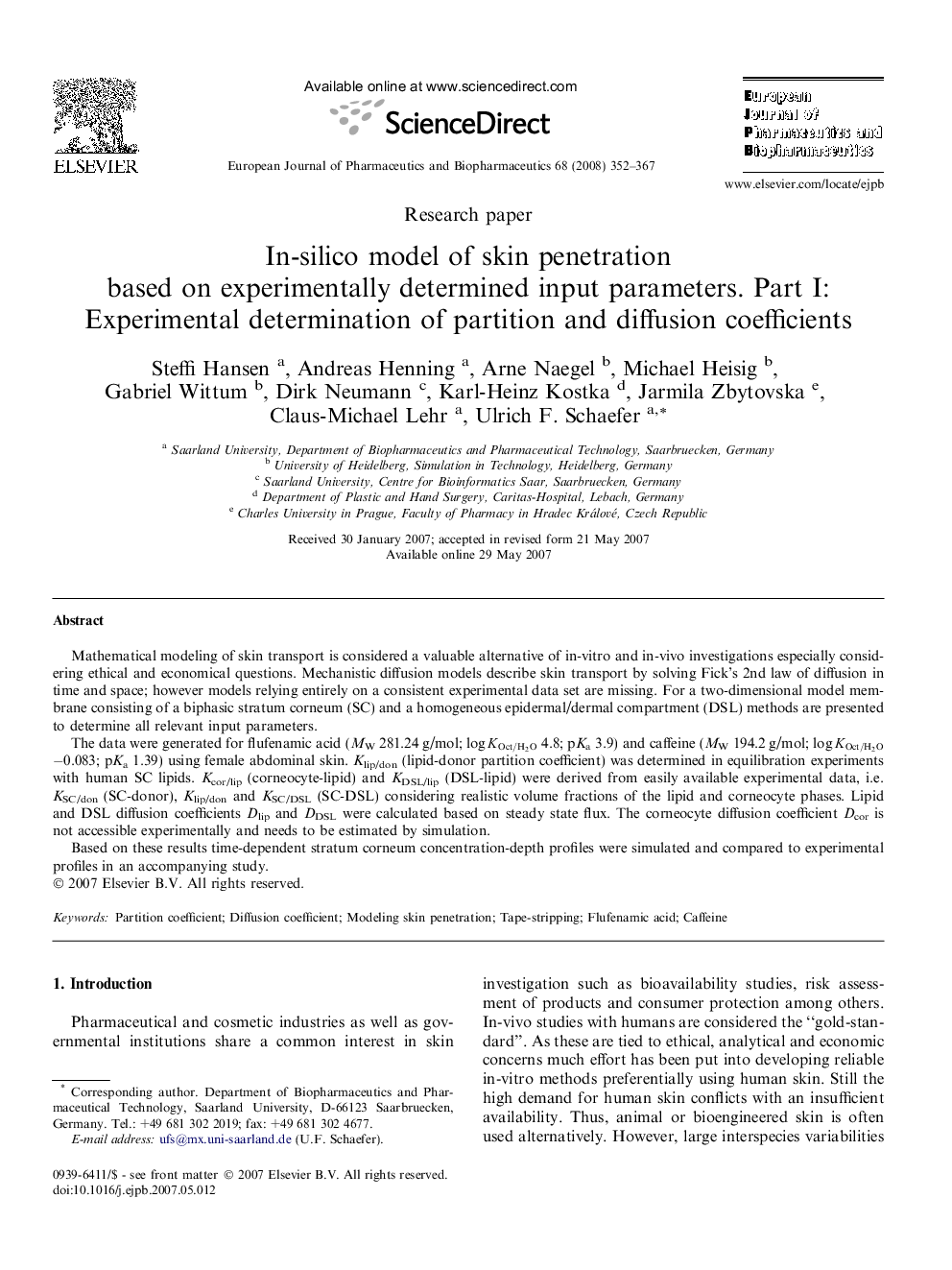| Article ID | Journal | Published Year | Pages | File Type |
|---|---|---|---|---|
| 2085679 | European Journal of Pharmaceutics and Biopharmaceutics | 2008 | 16 Pages |
Mathematical modeling of skin transport is considered a valuable alternative of in-vitro and in-vivo investigations especially considering ethical and economical questions. Mechanistic diffusion models describe skin transport by solving Fick’s 2nd law of diffusion in time and space; however models relying entirely on a consistent experimental data set are missing. For a two-dimensional model membrane consisting of a biphasic stratum corneum (SC) and a homogeneous epidermal/dermal compartment (DSL) methods are presented to determine all relevant input parameters.The data were generated for flufenamic acid (MW 281.24 g/mol; logKOct/H2OlogKOct/H2O 4.8; pKa 3.9) and caffeine (MW 194.2 g/mol; logKOct/H2OlogKOct/H2O −0.083; pKa 1.39) using female abdominal skin. Klip/don (lipid-donor partition coefficient) was determined in equilibration experiments with human SC lipids. Kcor/lip (corneocyte-lipid) and KDSL/lip (DSL-lipid) were derived from easily available experimental data, i.e. KSC/don (SC-donor), Klip/don and KSC/DSL (SC-DSL) considering realistic volume fractions of the lipid and corneocyte phases. Lipid and DSL diffusion coefficients Dlip and DDSL were calculated based on steady state flux. The corneocyte diffusion coefficient Dcor is not accessible experimentally and needs to be estimated by simulation.Based on these results time-dependent stratum corneum concentration-depth profiles were simulated and compared to experimental profiles in an accompanying study.
